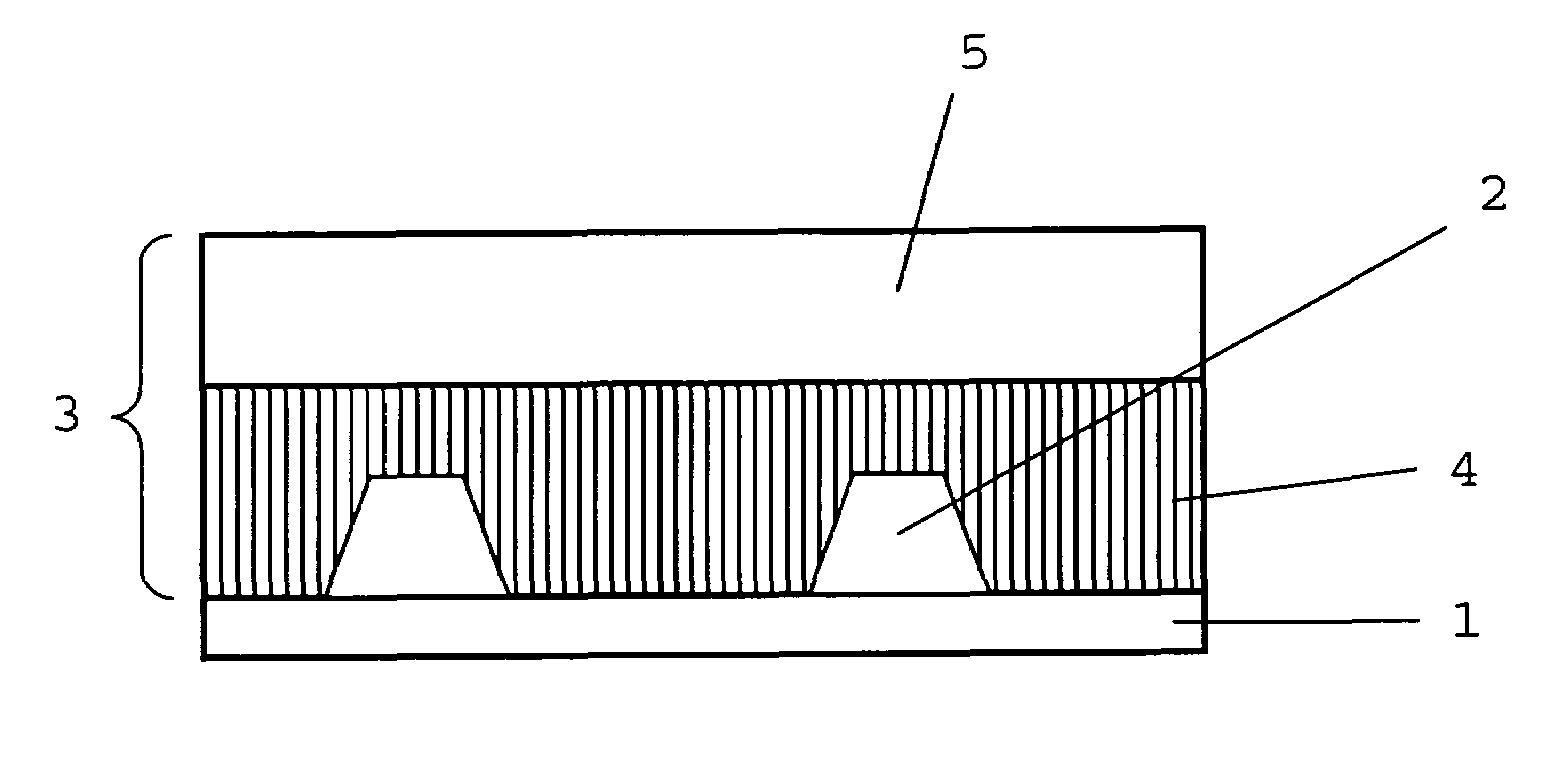Process for the back-surface grinding of wafers
a back-surface grinding and wafer technology, applied in the direction of polyether adhesives, film/foil adhesives, manufacturing tools, etc., can solve the problems of wafer breaking, no longer being able to contact the substrate surface, and not being able to complete contact with the substrate surfa
- Summary
- Abstract
- Description
- Claims
- Application Information
AI Technical Summary
Benefits of technology
Problems solved by technology
Method used
Image
Examples
examples
[0052]1. Film with a First-Order Hybrid System
[0053]A pressure-exerting roller was used to laminate films onto wafers with a diameter of 200 or 300 mm and integrated circuits and contact bumps with a height of 250 μm (polymer or metal bumps) and a diameter of 400 μm situated thereon. The films had a support layer which was 150 μm thick and comprised polyolefins or PVC. The adhesion layer of the film had the following composition: 77.5% by weight of linear polyesters and 19.5% by weight of a triacrylate (TMPTA) as crosslinking constituent in combination with 2% by weight of benzoin and 1% by weight of benzoylperoxide. The layer thickness of the adhesion layer was 300 μm.
[0054]There followed a first photochemically initiated partial polymerization, which was controlled by means of the radiation intensity or time in such a way that the adhesion layer adopted an elastic behavior.
[0055]Then, the support rear side was positioned on a rotating vacuum chuck, which is part of the grinding ma...
PUM
| Property | Measurement | Unit |
|---|---|---|
| diameter | aaaaa | aaaaa |
| height | aaaaa | aaaaa |
| thickness | aaaaa | aaaaa |
Abstract
Description
Claims
Application Information
 Login to View More
Login to View More - R&D
- Intellectual Property
- Life Sciences
- Materials
- Tech Scout
- Unparalleled Data Quality
- Higher Quality Content
- 60% Fewer Hallucinations
Browse by: Latest US Patents, China's latest patents, Technical Efficacy Thesaurus, Application Domain, Technology Topic, Popular Technical Reports.
© 2025 PatSnap. All rights reserved.Legal|Privacy policy|Modern Slavery Act Transparency Statement|Sitemap|About US| Contact US: help@patsnap.com


